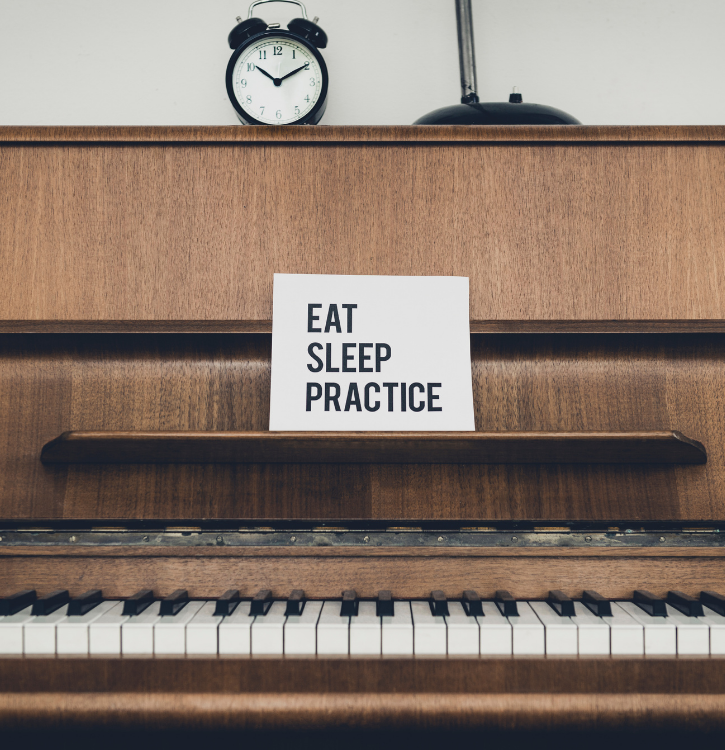When practising piano, it can be easy to slip into a routine that after a while can become either boring or actually plateau your practice. Many piano players, both beginners and advanced players struggle with this, so today we thought we’d break down a few quick tips to keep your practice fun and engaging from start to finish!
Keen to learn more about ways to enhance your piano practice? Why not read our guide to adding more expression into your piano playing here, or if you think your instrument might be the cause of your plateau, read our signs that your instrument might be holding you back here!
So without further ado, let’s dive into our top tips for restructuring your piano practice here.

Don’t Dive Right Into Your Pieces!
One of the most common things we see when sitting down to practice is people jumping straight into a piece they are trying to learn without warming up or developing their knowledge. We’ve written before about a few quick and easy warm up exercises you can do here, but the point definitely stands that at least 5-10 minutes of your practice should include a little theory or warm up practice before diving into your piece, not only will this improve your knowledge overall, but it will also warm you fingers up nicely to be able to perform better than starting from fresh!
Find A Way To Make Theory Fun
If you’re struggling with getting motivated to learn theory, start with some fun and engaging exercises to keep the brain active, one exercise we like to do is: Every week, try to introduce a new scale or arpeggio into your repertoire before moving onto your main learning. Chances are that overtime, and with a little practice, you’ll actually have unintentionally learned most of the common scales that are used in the pieces you’re looking to learn, making learning them far easier and giving you much more capacity to improvise and understand the music better.
If you do find scales and arpeggios particularly boring, try adding in a metronome and get creative with your rhythms, how quickly can you do them? Can you do them ‘off beat?’ Can you play completely different scales with each hand at the same time? Creating little challenges for yourself can not only be rewarding but also incredibly fun.
If you are learning with a child who finds it difficult to stay focused on their theory, read our guide to making piano fun for young learners here!

Read Your Material BEFORE Starting!
One of the other most common issues we see with piano practice is people beginning a piece only to discover that it’s well out of their ability range (for now!). Not being able to play a piece is not only incredibly frustrating if you’ve already started it, but can be a real deterrent for new learners. One of the best ways to overcome this is to fully review your piece before starting it. Do you understand all of the notations in the score? Is there anything you’re unsure of? Does the piece sound playable if you find it on youtube? All great questions to ask before getting started, ambition is great, but if you’re setting yourself up to fail, the only person to miss out is you!
Breaking Things Down
Now that you've done your warmups, read through your piece and are ready to start learning, instead of trying to tackle a piece in one sitting, it’s far better to break down your piece into small, bitesize sections. Start slowly at either half or even ¼ speed and make sure you’re able to play the section without making any mistakes. Repeat until you’re full comfortable and then either move onto the next section or play the piece in full speed to make sure you’ve got it correct.
So there you have it! Just a few quick and easy ways to break down your practice. If you are returning to the piano as an adult after a long hiatus, read our guide to returning to the piano here, Likewise, if you actually think that it might be your piano that is holding you back, read our guide to finding the signs that your instrument might be slowing down your learning here.
Want to learn more about upgrading your piano? Why not contact our experts today or visit our piano showroom to try some sensational instruments!

